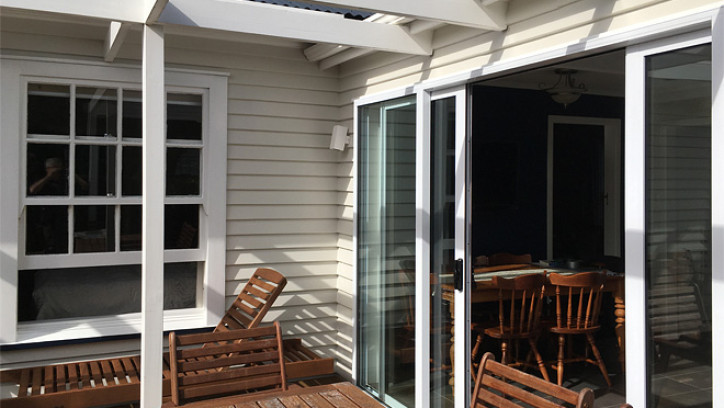Cooling and air conditioning
Last updated: 9 August 2023

What are the options for staying cool in summer?
Cooling options for your home
Well-designed homes in most parts of New Zealand will make the most of passive cooling and ventilation. They should need little or no mechanical (or active) cooling in summer.
Mechanical cooling options run on electricity. Using them to cool your house in summer will add to your power bills, sometimes surprisingly so.
Passive cooling
Passive cooling includes shade to keep the summer sun out, good insulation and good ventilation. Take steps to create cross-draughts in your home during design, by leaving doors and windows open. Think about shading your windows with eaves, plantings, awnings or louvres. Exterior shading is most effective because it does not even allow the heat into the house in the first place.
Passive cooling isn't just for new homes. Passive cooling features can be added to existing homes – it may be as easy as planting deciduous trees to provide shade in summer or leaving secured windows open to get the breeze circulating inside. In most parts of New Zealand, even in summer, this should be enough to keep your home cool.
Passive ventilation has more in-depth information on designing to cool your house in the summer.
Mechanical cooling options
Fans
If natural ventilation doesn't keep you cool enough, a fan may make you feel several degrees cooler – the air movement increases the rate at which moisture evaporates from your skin.
Fans are cheap to buy, easy to install and comparatively cheap to run. Portable floor and desktop fans are widely available, and can be stored away when not in use.
Ceiling fans
A ceiling fan circulates air in summer and helps to keep you cooler. In winter it can re-circulate warm air that collects near the ceiling.
A ceiling fan uses very little energy compared to an air conditioning unit, especially the recently developed energy efficient ones that are also whisper quiet. It needs a reasonable ceiling height to give good clearance and an electrical connection. Remember that fans don’t cool the air but the person, so switch them off in unoccupied rooms.
Evaporative coolers
Evaporative coolers are a form of air conditioner.
They cool air by evaporating water, so work best in dry climates. They are best used where there are low relative humidity levels in summer.
The National Institute of Water and Atmospheric Research website has information showing monthly humidity averages around New Zealand.
The only energy used is for the fan, so evaporative coolers are reasonably energy-efficient. They use water and portable units must be topped up regularly. To stop them making your home damp, let plenty of outside air into your house, while you use them.
Heat pumps
Heat pumps provide heating in winter, but most models can be switched to reverse – which means they can be used to cool your home in summer.
However, using a heat pump is not as cost-efficient as using exterior shading, opening windows or running a fan.
If you do use your heat pump:
- Use the dehumidifying mode to reduce humidity which can make it feel cooler. Only use cooling mode on really hot days, and shut doors and windows.
- Avoid using auto settings so that it doesn’t start heating when the temperature drops.